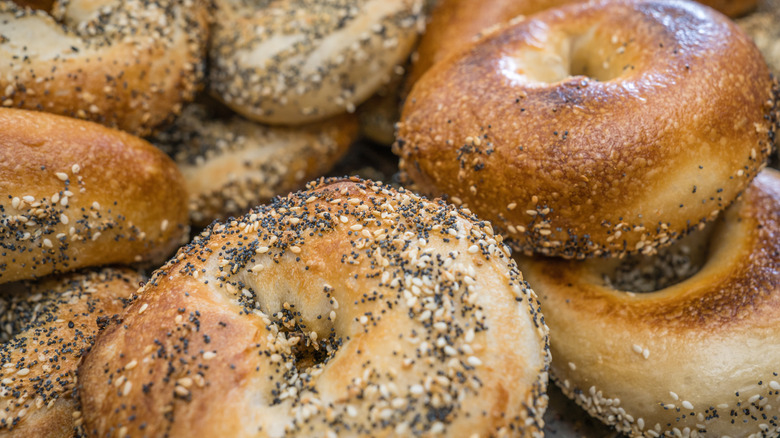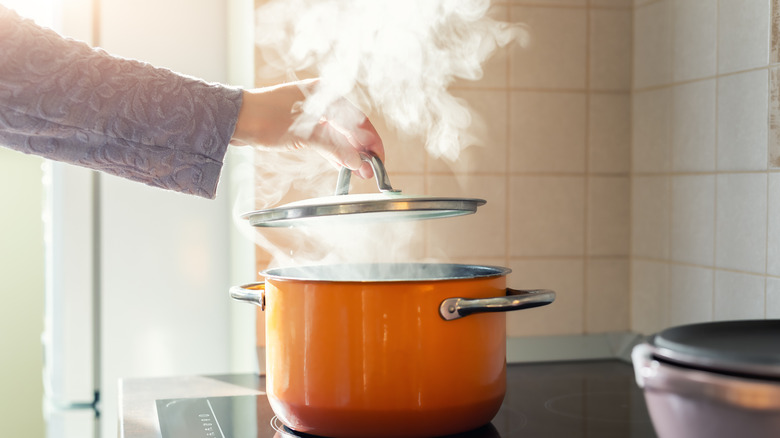The Traditional Cooking Step Some Bagel Makers Have Stopped Following
There are so many different types of bagels from plain, everything, and egg to blueberry, cinnamon raisin, and cheddar. According to Maria Balinska, author of "The Bagel: The Surprising History of a Modest Bread," what we now know as the bagel today first appeared in the United States anywhere from 1881 to 1914. However, ring-shaped doughs and breads date back way further. Balinska tells of a tale from 1683 where a local Austrian baker made some bread as a way to thank the King of Poland, Jan Sobieski, for saving his country from being invaded by Turkey. The dough in question was shaped like a stirrup and called beugel, which is Austrian for stirrup. While this is a wholesome tale, Balinska points out that bagels already existed in Poland 19 years before Sobieski was born and 73 years before he ever fought in the Battle of Vienna.
Balinska states that in ninth-century Prussia, Christians banned Jewish people from buying or baking bread, because of what bread stands for in relation to Jesus Christ. Jewish people then came up with a way to boil their bread, so they could still eat it and not get in trouble. Over time, Jewish people started baking their bread after boiling creating the bagel-making process that bagel makers know and still use today. However, some bakers are simplifying the age-old bagel-making process.
Some bagel makers steam the bagels instead of boiling them
Although boiling bread was necessary for Jewish people in the ninth century to be able to enjoy it, there are actually a lot of reasons why this process works and remains mostly unchanged. Balinska says in her book that boiling bagels helps them hold their shape when they get baked in the oven and the starch in the dough gelatinizes from the heat, leading to the shiny exterior that bagels are known for. She also says that boiling bagels is an extremely crucial step in the process, with every bagel maker having their own rule for how long to boil a bagel.
That step has seemingly lost its importance in recent times. Harold McGee writes in his book "On Food and Cooking: The Science and Lore of the Kitchen" that with advances in baking equipment and technology, the boiling step is oftentimes skipped altogether, and bagels are simply steamed than baked. Chef Richard Coppedge of the Culinary Institute of America told NPR, "This steam will gelatinize the surface only, and encourage more color and shine, but not promote the unique chewiness because the steam won't get to the starchy interior." Both McGee and Coppedge say that steamed bagels are fluffier and less chewy compared to bagels boiled in the traditional way.
After you've decided if you're a traditionalist committed to the boiling process or a modern baker who uses steam, you'll have other important bagel-making steps to master like getting the perfect shape. Here's a simple bagel shaping method that will help you out.

